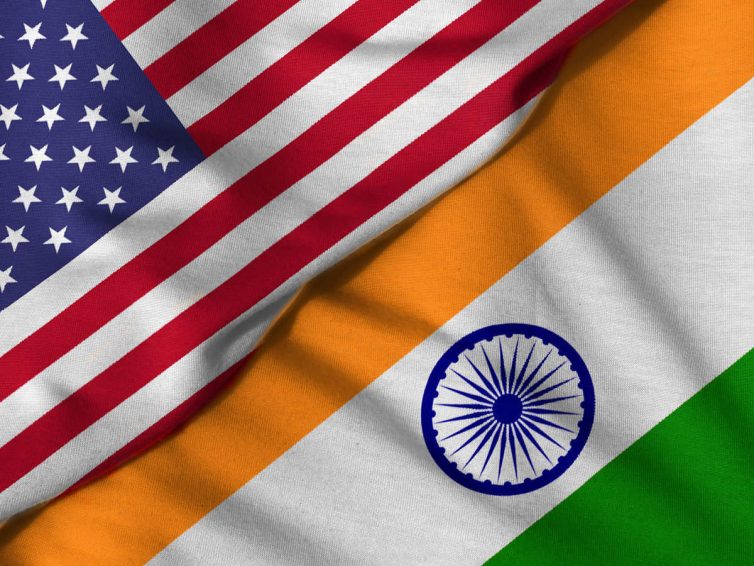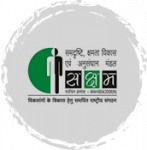One of the activities I undertook, while vacationing in India, was to rate & review the buildings for accessibility. One of the immediate things that stood out was the vast difference in the type of accessible facilities there, versus in the U.S.
According to the official census, India has about 2.21% of the population with some form of disability.
According to the World Health Organization (“WHO”), disability includes physical, mental, intellectual or sensory impairments which causes barriers in the person with such a condition to be able to fully participate in society like everyone else. Accessibility, according to WHO, is about giving equal facilities and access to everyone in all aspects of life.
Accessibility is extremely important. In today’s society and culture, we want to contribute kindness and inclusivity on a macroscale, and one giant leap to that goal is by having adequate accessible facilities so that disabled individuals are able to participate & integrate fully in society.

In the US, the Americans with Disability Act (“ADA”) enacted in 1990, is a civil rights law that prohibits discrimination against individuals with disabilities. The purpose of the law is to ensure people with disabilities also have the same rights and opportunities as everyone else, i.e. no discrimination at all levels of society, against people with disabilities.
 India enacted the Rights of Persons with Disability Act (“RPWD) in 2016. While the ADA focuses on non-discrimination, the RPWD is much broader. While RPWD does focus on non-discrimination, it reflects a paradigm shift in how disability should be viewed from a societal and human rights perspective. It proclaims that persons with disabilities matter and belong in our society, that they are assets and make us stronger, that they also deserve respect and dignity and should have freedom to make choices on their own, just like everyone else.
India enacted the Rights of Persons with Disability Act (“RPWD) in 2016. While the ADA focuses on non-discrimination, the RPWD is much broader. While RPWD does focus on non-discrimination, it reflects a paradigm shift in how disability should be viewed from a societal and human rights perspective. It proclaims that persons with disabilities matter and belong in our society, that they are assets and make us stronger, that they also deserve respect and dignity and should have freedom to make choices on their own, just like everyone else.
While the RPWD Act is a step in the right direction, there is still a lot to be done. In the U.S., with the enforcement of ADA, almost every public facility has to have something to assist people with disabilities. Unfortunately, that is not the case in India. What I observed in the cities I visited in India, is that there are either very limited facilities or none at all. For example, ramps are either narrow or partially broken making it dangerous, or ramps are up to the standards, but there would be a ledge right in front of the entrance, or there is elevator but only steps to get to the elevator.
While the ADA is extensive in requirements of accessible facilities, the RPWD Act only wants to see increases in the accessibility of public facilities. The only time it is mandatory to add an accessible facility is when it is being applied to a workplace building. The problem with this is, the majority of the disabled population of India is unable to work, so the number of buildings that have adequate facilities are very few.
Aside from the inadequate awareness, the RPWD Act also makes it difficult for accessible facilities to be more common. Multiple businesses have claimed that the RPWD has too many restricting criteria, and the only way for them to fulfill those criteria would be to make significant changes to the building structure. They have to make sure their accessible facilities themselves have certain dimensions, it must fit within specific building dimensions, there must be certain technologies available, etc. This has led to many businesses not following the RPWD accessible facilities guidelines.
Along with the strict guidelines of the RPWD Act, there are very few advocates for disability awareness. Whereas in the U.S., there are large numbers of advocates, and disability awareness is taken very seriously. It is taken so seriously that even celebrities received backlash for being dismissive of disabled people’s rights. Unfortunately, in India, there is not enough of the same kind of awareness. In the U.S., there are so many government led and sponsored disability organizations (51 as of this year), but in India, there is only one. There is such a big difference in the people advocating for disability rights and public accessibility in these two countries.
The ADA is enforced well in the U.S. and the culture is to embrace awareness and normalcy surrounding disability, so there is no social stigma or embarrassment about having one. Even those who are not disabled have a great degree of compassion towards those who are.
In order to bring India to a level to where the U.S. is with respect to disability awareness, it is very important to determine the correct number of the disabled population. In the 2011 census questionnaire, there is a question asking if any family member is disabled. However, this has not been accurately documented. To achieve this, the government should create a separate database for those who are disabled to get a more accurate percentage.
Once a more accurate percentage is obtained, and people finally understand the extent of the disabled population, awareness and empathy towards them will follow. This will help people come out of the negative social stigma of having a disability. People will help by increasing awareness and acceptance. More acceptance of disability will lead to better awareness, and in turn, help create a “change” mindset (domino effect).
Also, the RPWD building code requirements should be relaxed, especially for older buildings. Adding new things is expensive. Instead, we encourage retrofit of older buildings.
Having an entirely new building built, or having new facilities put in the building is very expensive. Rather than doing these things, we can just retrofit the inaccessible parts of the buildings.
There are few ways the current building can be modified to make it accessible, for example:
- The ledge by the building can be demolished to create a flat land which makes it easier to build a ramp.
- The non-automatic door can be removed, and replaced with an automatic door, or, if the technology is not available, someone can be waiting by the door to assist disabled people and hold open the door for them.
- Ramps should also be fixed and be adequately sized to ensure there is enough space for a wheelchair or assistive device to move without fear of falling.
Although a lot of older buildings do not have accessible facilities available, newer buildings are doing their best to incorporate accessible facilities. One comparison that I saw was an older mall, Gulmohar Park Mall, had stairs and a ledge leading up to the entrance. But a newer mall, Palladium Mall, has a wide ramp that leads up all the way to the entrance and smoothly connects with the same-level floor on the inside of the mall. Although, both had automatic doors and escalators inside the buildings.
Another thing I think that can be done is that there should be more government support in getting accessible facilities in buildings. I think that the RPWD should make the criteria less strict and be a little more lenient about them (However, this does not mean they should just sit back completely). Just like the AIC (Accessible India Campaign), there should be more government led and sponsored, or government supported, disability campaigns and programs. There should also be a better way of getting a census of the disabled population of India and providing adequate facilities for them.
One last thing that should be done is that there should be some kind of task force for the enforcement of accessibility requirements on inaccessible buildings. Or, we should check if there is any kind of enforcement done. If there is, it needs to be known how good it is and what extra it needs. If there is not, then there should be work done to develop it.
Besides all the negatives, there is a positive – there is change actively happening in India. After the Accessible India Campaign was proposed by the founder of Voice of Specially Abled People, Shri Pranav Desai, and carried out by the Honorable PM of India, Shri Narendra Modi, there has been increased awareness of disability.
The VOSAP Mobile App also plays a big role. In the App, there is a feature to rate the accessibility of buildings. Because people, disabled or abled, are rating how accessible buildings are, and awareness is slowly increasing.

Research links:
https://aif.org/wp-content/uploads/2018/12/Manual-RPWD-Act-2016.pdf
http://bareactslive.com/ACA/act3028.htm?AspxAutoDetectCookieSupport=1
https://adata.org/learn-about-ada
https://disabilityaffairs.gov.in/content/page/acts.php
https://censusindia.gov.in/census.website/CENSUS_ques
https://aif.org/wp-content/uploads/2018/12/Manual-RPWD-Act-2016.pdf
































